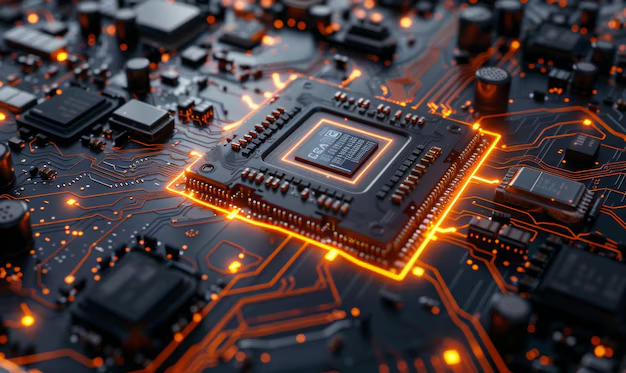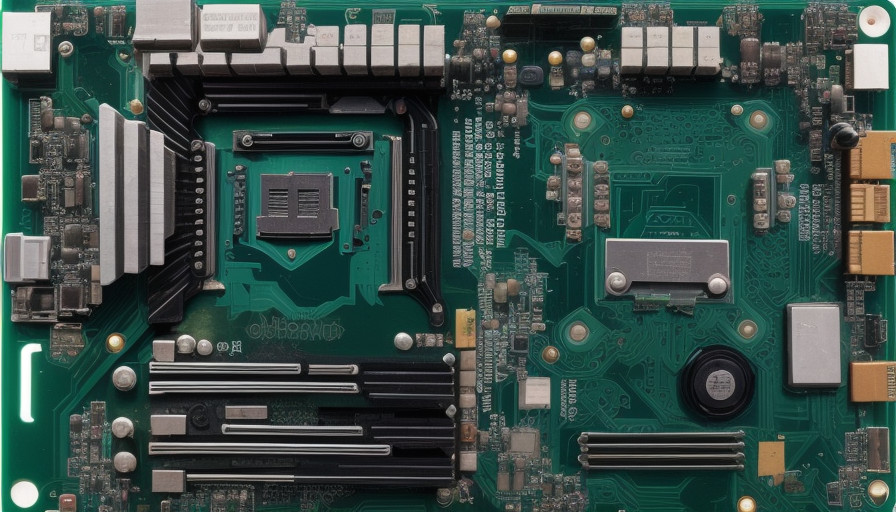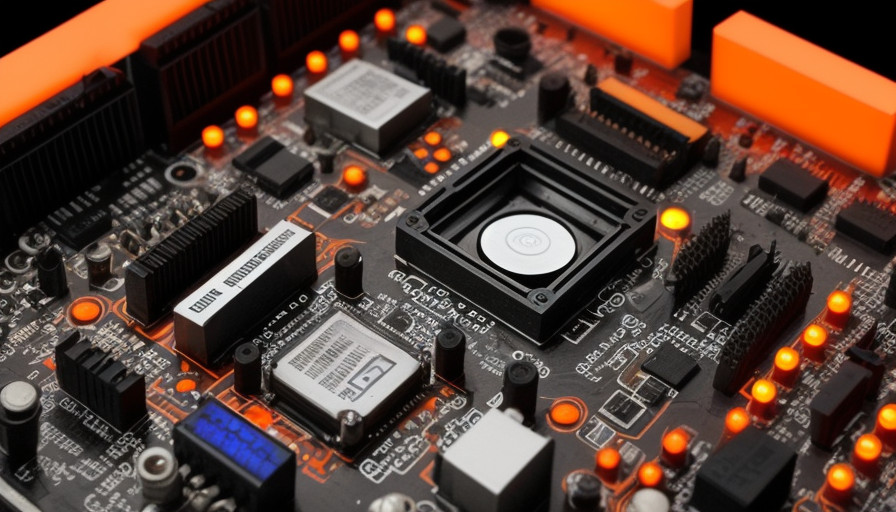Hi there! I remember my worry when my motherboard’s orange light came on. It’s often not a big problem. I’ll guide you through what this light means and how to fix it easily, so you can get your PC working again.
If your motherboard light is orange, it often indicates a hardware issue or a problem with power connections. Check your cables and components to ensure everything is properly connected. If the issue persists, consult your motherboard’s manual or seek professional help.
In this article, we will discuss what it means when your motherboard light is orange, common causes for this issue, and how to troubleshoot and resolve it effectively.
Understanding Motherboard Indicator Lights
What Are Motherboard Lights?
Motherboard lights are tiny LEDs placed on the board itself, usually near important components like the RAM slots or power connectors. These lights serve as indicators of the motherboard’s status, and they can help you diagnose potential issues with your computer.
Common Colors and Their Meanings
Different colors typically represent different statuses:
- Green usually indicates that everything is functioning correctly.
- Red might suggest a critical error, such as a CPU or RAM failure.
- Orange can have various meanings, depending on the motherboard and the manufacturer.
Understanding these colors can help you identify and troubleshoot issues more effectively.
What an Orange Motherboard Light Might Indicate
Power Supply Issues
An orange light might suggest that there’s an issue with your power supply unit (PSU). It could mean that the motherboard is receiving power, but something isn’t quite right. This might be due to insufficient power, faulty cables, or a failing PSU.
Standby Power Mode
Sometimes, an orange light simply means that the motherboard is in standby mode. This usually happens when the computer is off but still plugged into a power source. In this case, the orange light is normal and not a cause for concern.
Memory or RAM Problems
Memory issues are another common cause of an orange motherboard light. If your RAM sticks are not properly seated, or if there’s a fault with one of them, the motherboard might display an orange light as a warning.
BIOS Issues
The Basic Input/Output System (BIOS) is crucial for your motherboard’s operation. An orange light might indicate a problem with the BIOS settings or even a corrupt BIOS. This is something that might need a bit more technical expertise to fix.

Diagnosing the Orange Light
Step 1: Check the Power Supply
Start by ensuring that your power supply is functioning correctly. Check all the connections and make sure that the PSU is delivering the right amount of power to your motherboard.
Step 2: Inspect RAM Modules
Next, take a look at your RAM sticks. Remove them and then reseat them to make sure they’re properly connected. If the orange light persists, try testing each RAM module individually to see if one of them might be faulty.
Step 3: Examine the BIOS Settings
You can access the BIOS by pressing a specific key during startup (usually Del, F2, or F10). Once you’re in the BIOS, check for any unusual settings or error messages. You might need to reset the BIOS to its default settings if you suspect something is wrong.
Step 4: Test Other Hardware Components
If the problem persists, consider testing other components, such as the CPU, GPU, and hard drives. Sometimes, a failing component elsewhere in the system can cause the motherboard to signal an issue with an orange light.
Troubleshooting Steps
1. Restarting Your Computer
A simple restart can sometimes resolve the issue. If the orange light was caused by a minor glitch, rebooting might clear it up.
2. Checking for Loose Connections
Make sure all cables and components are firmly connected. A loose power cable or poorly seated RAM stick can easily trigger an orange light.
3. Resetting the BIOS
If you’re comfortable doing so, try resetting the BIOS to its default settings. This can resolve any issues related to incorrect configurations.
4. Running a Power Cycle
To perform a power cycle, turn off your computer, unplug it from the wall, and hold down the power button for 30 seconds. This can help reset the system and clear any lingering issues.
5. Testing with Minimum Configuration
Remove all non-essential components and see if the system starts with just the basics (CPU, one stick of RAM, and PSU). If the orange light disappears, it might indicate that one of the removed components is faulty.
When to Be Concerned
Signs That the Orange Light Indicates a Serious Issue
If the orange light is accompanied by other symptoms, such as beeping noises, random shutdowns, or the computer not booting at all, it might be a sign of a more serious issue. In such cases, further investigation or professional help may be necessary.
When to Seek Professional Help
If you’ve tried all the troubleshooting steps and the orange light remains, it might be time to consult with a professional. A technician can diagnose the problem more accurately and recommend the best course of action.

Preventive Measures
Regular Maintenance Checks
Keep an eye on your computer’s health by regularly checking the connections and cleaning out any dust that might accumulate. Regular maintenance can prevent many issues that cause the orange light to appear.
Proper Power Management
Verify that your computer is connected to a dependable power source. Using a surge protector can help protect your motherboard from power fluctuations that might trigger an orange light.
Keeping BIOS and Drivers Updated
Regularly updating your BIOS and system drivers can prevent many issues. Outdated software can sometimes cause hardware to malfunction, leading to indicator lights turning orange.
Motherboard stuck at orange light
If your motherboard is stuck at an orange light, it typically signals a hardware or power issue. This guide will help you diagnose the problem and provide solutions to get your system running smoothly again.
Importance of a Functioning Motherboard
A functioning motherboard is essential as it connects all computer components, like the CPU, RAM, and storage. It ensures smooth communication and operation, making it crucial for your system’s performance.
Examining Additional Reasons for the Orange Light
Certainly! The orange light could indicate a range of issues beyond the basics: it might signal a need for routine maintenance, a minor system glitch, or even a sensor that’s getting out of calibration. It’s worth diving deeper into the specifics of your device to pinpoint the exact cause.
Reasons for an Orange Light on a Motherboard.
An orange light on a motherboard might not just be a sign of a hardware issue; it could also suggest a problem with power supply, overheating, or BIOS settings. It could even indicate a pending firmware update or a minor hardware connection issue. Checking each of these areas can help narrow down the exact cause.
FAQs
What should I do if the orange light stays on?
If the orange light remains after troubleshooting, consider consulting a professional to diagnose and repair any underlying issues.
Can an orange motherboard light damage my computer?
The light itself won’t cause damage, but the issue it indicates might. It’s important to address the root cause to prevent further problems.
How can I prevent motherboard light issues in the future?
Regular maintenance, proper power management, and keeping your BIOS and drivers up to date can help prevent issues that cause the orange light to appear.
Is it safe to ignore the orange light if my computer is working fine?
While the computer might still function, the orange light indicates that something may not be right. It’s best to investigate the cause to avoid potential problems later.
What does it mean if the orange light is blinking?
A blinking orange light can indicate different things depending on the motherboard model. It might suggest a power issue, overheating, or a failing component. Refer to your motherboard’s manual for specific details.
What does orange motherboard light mean?
An orange light on a motherboard typically signals a hardware issue or a power problem, such as insufficient power supply or a loose connection. It’s a warning that something needs attention before the system can function properly.
Why is my PC showing orange light?
An orange light on your PC usually means there’s a hardware issue or a power supply problem. It’s a signal that something needs fixing before your system can operate normally.
How do I fix the orange static light on my motherboard?
To fix an orange static light on your motherboard, start by checking all power connections and reseating your RAM and graphics card. If that doesn’t help, inspect for overheating or BIOS issues, and consult your motherboard manual for specific troubleshooting steps.
Why is my Asus motherboard stuck on orange light?
An orange light on your Asus motherboard often points to a hardware issue, such as a power connection problem or a loose component. Double-check all connections, ensure components are properly seated, and consider checking for BIOS updates or overheating issues.
Orange light on motherboard ASUS?
An orange light on an ASUS motherboard typically indicates a power or hardware issue. Check your power connections, reseat components, and ensure there’s no overheating or BIOS update needed.
ASUS motherboard solid orange light no boot?
A solid orange light on your ASUS motherboard with no boot usually means there’s a power or hardware issue. Verify all connections, reseat components, and check for possible overheating or BIOS issues.
ASUS motherboard orange light no display?
An orange light on an ASUS motherboard with no display often signals a hardware problem or a power issue. Check your connections, reseat your RAM and GPU, and ensure there are no overheating issues.
Orange light on motherboard DRAM?
An orange light on the DRAM indicator of a motherboard typically means there’s a problem with your memory. Try reseating the RAM modules or testing them one by one to identify any issues.
Conclusion
If your motherboard light is orange, it’s usually a sign that something’s amiss—whether it’s a power issue, a loose connection, or a hardware fault. It’s like a warning light for your computer, urging you to check your connections, components, and system temperature to get everything back in working order.

Leave a Reply